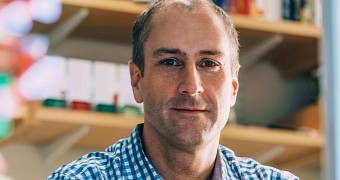Massachusetts Institute of Technology (MIT) investigators have recently eliminated a major hurdle from the path of using DNA origami for creating large-scale, 3D structures inside cells. This was possible through the creation of a computer software that automates the process.
DNA origami is a design technique that enables experts to literally use deoxyribonucleic acid as a sheet of paper, twisting and folding it on itself until they get a desired structure. The DNA-based structures are kept in place by short staples, also made of the same acid.
This view of DNA is a radical departure from the traditional one, which sees the molecule as only the main carrier of genetic information inside living organisms. But some saw past that, and though of it as a malleable molecule that could be used as the building block for amazing constructs.
Using it, it is possible to construct nanoscale structures inside living organisms. This could enable scientists to create new methods of performing artificial photosynthesis (which is essential for biofuel production), delivering drugs, creating biosensors and so much more.
California Institute of Technology (Caltech) computational bioengineer Paul Rothemund developed DNA origami in 2006, and Harvard Medical School experts managed to move the technique in 3D a few years later.
But, even if the design of complex curved and bent structures is possible today, the process is still laborious, due to the fact that the DNA molecules need to be cared for every step of the way. This is where the new innovation by MIT scientists steps in.
Software developed by biological engineer Mark Bathe and his team can predict how shapes and structures will be produced from specific DNA templates. The creation of complex, 3D objects is now made a lot simpler, even if not even this innovation enables a full automation of the design process.
“We ultimately seek a design tool where you can start with a picture of the complex three-dimensional shape of interest, and the algorithm searches for optimal sequence combinations,” Bathe explains, the.
“In order to make this technology for nano-assembly available to the broader community – including biologists, chemists, and materials scientists without expertise in the DNA origami technique – the computational tool needs to be fully automated, with a minimum of human input or intervention,” he adds.
Bathe also holds an appointment as the Samuel A. Goldblith assistant professor of applied biology at the Institute. Details of the new software were published in the February 25 issue of the top scientific journal Nature Methods.
“One bottleneck for making the technology more broadly useful is that only a small group of specialized researchers are trained in scaffolded DNA origami design,” the expert concludes.

 14 DAY TRIAL //
14 DAY TRIAL //